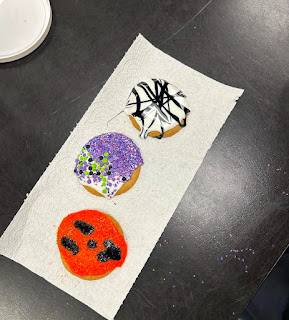On October 17, many juniors at Seminole High School will sit down in unfamiliar classrooms to take the Preliminary SAT, or PSAT, trying to qualify for the National Merit Scholarship.
Every student is looking to score highly on the test. However, it can be difficult to achieve lofty goals without the proper preparation and mindset during the test.
The PSAT consists of reading, writing, and mathematics portions. Each is scored on a scale of 20 to 80 points, and these scores are added together to determine the overall score, which is used in determining the cutoff score for qualification for the National Merit Scholarship. This scholarship is very prestigious, as the cutoff score is set at the 99th percentile for all students in each state.
In order to reach such a high score, students need to practice accordingly. The material covered on the PSAT can be different from what is covered in class; however, there are still resources which can be used to help practice for the test.
The College Board, which administers the test, has both what types of questions are asked on the test and some practice problems for each section on their website. In addition, visiting the SAT Question of the Day portion of the website can provide some good practice with the various types and level of difficulty questions which could be asked on the PSAT.
Taking full length practice tests can also help prepare for the time constraints of the real test. Pacing oneself so that every problem can be looked at and attempted can be the difference on the PSAT.
Senior John Li, who qualified for the National Merit Scholarship, took several practice tests as he was preparing. “It lets you know what types of problems are going to be on the test,” he said. “Practice detecting them [various problem types] in practice tests, and you’ll be able to recognize them in the real test.”
The booklet provided to students by English teachers after signing up for the test written by the College Board contains a full length practice test, and many bookstores carry PSAT prep books which contain practice tests.
Taking practice tests also help in developing strategies for taking the real test.
Senior and National Merit Scholarship qualifier Khandoker Ahmed said, “If you can eliminate at least one answer choice, it’s always a good idea to guess.” He also suggests underlining important segments of reading passages, and skipping hard questions on the reading and writing sections to save time. “In math, the questions generally go from easy to hard, so skipping questions isn’t always the best idea,” he cautioned.
Having a clear mind and the right mindset during the test is critical to performing well. Senior Nirali Patel, who qualified for the National Merit Scholarship, said that it is important to “remain calm and pace yourself during the test.” She also mentioned the importance of sleeping and eating well before the test, so that students can stay focused and keep their minds sharp.
One last tip is for students to refrain from putting too much pressure on themselves during the test. A student doesn’t need to answer every single question correctly if he or she wants to score highly on the PSAT. Forgetting about hard questions and continuing to move forward in the test is the only way to perform up to potential on the PSAT























